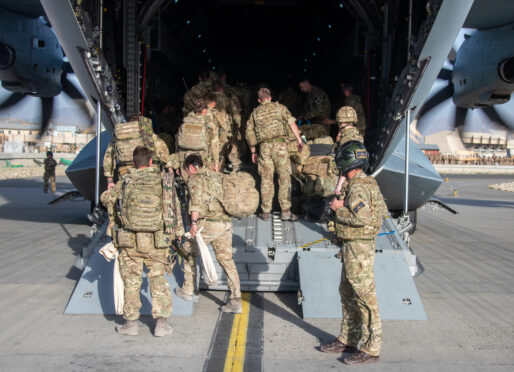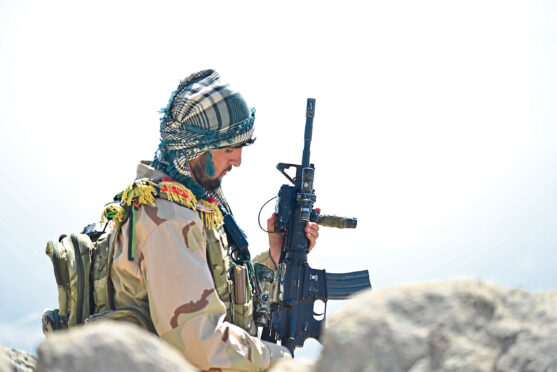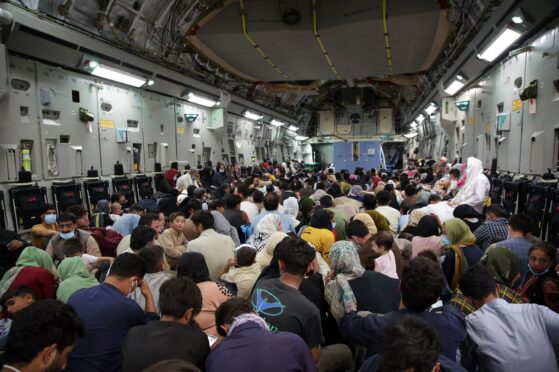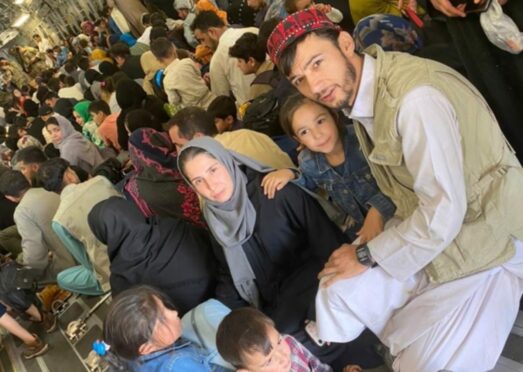
Rick Fawn is a professor at the School of International Relations at St Andrews University. His books include Global Responses to Terrorism.
This is a pivotal moment in history and the images we watch from Kabul will, one day, prompt future generations to ask: “How could this happen?”
As if by malevolent design, in Kabul today we even have the re-enactment of the fall of Saigon in 1975 – a US helicopter urgently evacuating people from atop the US Embassy. This is enduring imagery of US defeat.
The historical significance of recent events is already evident in several ways. Firstly, the US withdrawal from Afghanistan and, by necessity, the hasty extraction of allies like Britain was practical. But it was also intended as political theatre, on cue to close by the 20th anniversary of the terror attacks of September 11, 2001.
The second is that the withdrawal represents a historic setback for the West. True, extracting more than 100,000 people in a matter of days is a feat – but one crafted in defeat. The lasting legacy may instead be exactly what it sought to prevent – Afghanistan serving as a cauldron of instability and extremism.
The third legacy concerns broader US policy reversal. In the past two decades, Western governments refused to speak to the Taliban – the only engagement was intended to eradicate it. Now they are apparently a security partner to facilitate evacuation from Kabul airport, even to the point of receiving high-sensitivity Western intelligence.
The agreement leading to this unthinkable situation arose from a one-sided arrangement from the Trump presidency. Only the US negotiated with the Taliban; Western allies were excluded. And the agreement was secured exclusively with the Taliban – the sworn enemy of the Afghan government the West was supporting. The Biden presidency inherited this unworkable legacy.
A fourth factor concerns the consequences of dynamics between Islamic extremists and the West. The lethal bombing by the IS-K, or Islamic State Khorasan, outside Kabul airport could act as the commencement of violent jockeying for control of the country. Bloodshed between extremists may seem ghoulishly satisfactory, but that can only mean instability, inside and beyond Afghanistan. The innocent will suffer.
That Western governments console themselves with the Taliban’s presence by arguing that it will “behave” because it seeks international recognition shows the absence of alternatives. Our best-case scenario for Afghanistan includes the Taliban issuing Orwellian warnings that women are to stay at home – “for their own safety”. If for only one contrast, consider that in 2019 the Afghan parliament had the same percentage of women representatives as the United States Congress.
The West will face consequences of asymmetric warfare – when the immense technological capacity of the Western side melts in the face of rag-tag but ideologically-determined enemies. American remote targeting can – and will need to – deliver some victories, such as the US claim of killing an organiser of the airport bombing.
But that is not conflict management, or even its mitigation. Such tactics will not deter but more likely embolden opponents – foes who see value in death and destruction, including of their own in the cult of martyrdom. Our capacity to deal with these antithetical threats is only marginally better than it was in 2001.
A positive lesson from the 20-year Afghan intervention comes now with hindsight: Does the Taliban’s total sweep to power in past weeks show how much the Western military presence kept it at bay? But the withdrawal debacle will underscore that counter-productivity of Western intervention in the future, no matter how seemingly noble or necessary.
The withdrawal itself, now accompanied by its searing camera-ready catastrophes, will embolden Western enemies. What we have witnessed is a profoundly unwelcome historical turning point. And it is one, like the 1975 harried evacuation from Saigon, that will live on, provoking painful questions from future generations.

Enjoy the convenience of having The Sunday Post delivered as a digital ePaper straight to your smartphone, tablet or computer.
Subscribe for only £5.49 a month and enjoy all the benefits of the printed paper as a digital replica.
Subscribe



